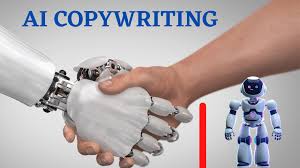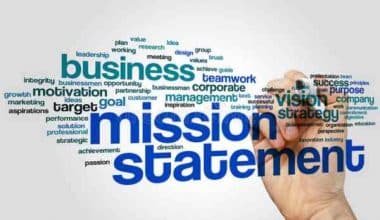HR analytics is a data-driven approach to improve HR-related decisions. So, directors can now discover effective practices and uncover weak areas in need of improvement by utilizing data pertinent to HR initiatives. HR analytics also provides strategic decision-making that can lead to successful business outcomes. Let’s discuss Predictive HR Analytics, data, courses, examples, and importance.
HR Analytics Data
You acquire a lot of data as an HR professional. Unfortunately, this information is frequently unused. HR data analytics begins when you begin to examine human resource difficulties utilizing this data.
Data sources that are Commonly Solutions for HR analytics
#1. Internal Data
Internal data is information gathered from a company’s human resources department. You can use several data elements in the basic HR system in an HR analytics application. The following are some of the metrics in an HRIS system:
- Employee tenure
- employee compensation
- Training records for employees
- Information on performance evaluations
- Structure of reporting
- Information on high-potential, high-value workers
#2. External data
External data is gathered via forming collaborative partnerships with other divisions inside the company. Data from outside the company is also important since it provides a global perspective that data from within the business cannot provide.
#3. Financial Data
Financial data from across the organization is essential for any HR analysis. Such as calculating the revenue per person or the cost of hire.
#4. Information specific to the organization
The sort of data that HR requires to enhance analytics will vary depending on the type of organization and its primary offering (product or service). “HR leaders at a global retailer, for example, should power their analytics engine with store revenue and costs as well as customer experience data. Whereas HR at a construction company might pursue operational, health, and safety data as well as data related to contingent labor costs.
#5. Employee passive data
From the moment they are solicited for a job, employees contribute data that is recorded in the HRIS. HR data analysis can also be guided by data from their social media posts and shares, as well as feedback surveys.
#6. Historical data
Patterns in employee behavior are determined by a number of global economic, political, and environmental events. Such data can provide insights that internal data alone cannot.
HR Analytics Courses
HR analytics courses include basic statistical knowledge, HR data, and metrics, as well as actual analytics. Because HR analytics is such a broad topic with so much content to cover at various levels of competence, not every course will be equally fascinating to everyone. So, if you feel like you’ve mastered one course’s subject, the next one can be more applicable to you. Whether you’re new to HR or a seasoned pro, staying up to date on cutting-edge technology like HR and people analytics is critical to separate out from the crowd. We’ve compiled a list of the top HR analytics courses available for you, in no particular order.
#1. Udemy’s HR Analytics: Analytics in Talent Management
HR analytics offers a wide range of courses, with talent management being one of the most essential. The recruitment strategy, talent development measures, how to assess employee engagement, as well as employee compensation are all covered in this section.
The HR analytics courses at Udemy offers two hours of on-demand video in English as well as a certificate of completion. It aims at HR professionals with at least two years of experience and costs around $20 without discounts, according to a localized pricing model.
#2. openSAP’s People Analytics and Evidence-Based Management
SAP is a global technology behemoth, with its SuccessFactors suite gaining acclaim in the HR space. Under the open SAP brand, the firm also offers Massive Open Online Courses (MOOCs). Check out their free online people analytics course, which is accessible in English, French, Spanish, and Dutch.
It’s a self-paced course with about four weeks of content that gives you an overview of how to apply HR analytics in real-world situations. Therefore with an SAP account, you can access it for free.
#3. American University’s Graduate Certificate in Human Resource Analytics and Management
You will obtain a graduate degree after completing these HR analytics courses. As a result, it aims at young professionals who are looking to advance their careers by obtaining the necessary educational credentials. The course credits can be utilized toward a master’s degree at the same institution.
Learners will gain knowledge in data-driven decision-making, human resource information systems, as well as important HR KPIs, and compliance/risk management throughout the course of 12–15 months. You can offer this training in English.
#4. Josh Bersin’s People Analytics
The Josh Bersin Academy includes a large library of HR-related content, including a people analytics course. With a study period of 4–6 hours, it is also designed for an online communal learning experience. It takes a business-oriented approach to analytics, making it suited for non-technical users.
Josh Bersin’s People Analytics course is divided into five parts that cover the history of analytics, data literacy, and how to use data for effective communication. The Josh Bersin academy offers monthly membership plans starting at $40 per person, with content available in English.
#5. Google’s People Analytics re: Work
Under its re: A work project, Google maintains a collection of excellent learning materials. This provides a brief overview of the concept as well as four concrete guidelines to assist HR professionals in using analytics at work. Fair pay practices, employee survey management, HR metrics identification, and collection. As well as how to adopt an analytics mindset are all covered in these four guides.
#6. Wharton University of Pennsylvania Online’s People Analytics
This analytics course is part of Wharton’s Business Analytics Specialization series of courses on Coursera. The course is offered in three languages: English, Korean, and Chinese.
People Analytics on Coursera is a self-paced course that takes about 11 hours to finish. It also covers topics including analytics for staffing, collaboration, and people management. Currently, there is no cost to enroll.
Read also: 5 Most Effective Ways To Reduce Employee Turnover
Analytics can help your company measure absenteeism, turnover, burnout, performance, and much more in this way. Enroll in professional training in HR data analytics to gain a head start.
HR Certificate Program in People Analytics This certificate’s core courses are as follows:
- HR Analytics Leader is a course that teaches you how to be a leader in HR. This training is designed for managers in charge of analytics departments. It teaches you all of the skills and tools you’ll need to succeed.
- HR Data Analyst is a course that teaches you how to analyze HR data. This course is for HR professionals who want to learn how to use simple technologies like Excel and PowerBI to work with HR data.
- Strategic HR Metrics is a course on strategic HR metrics. The core of analytics is metrics. This is the course for you if you think you’re not ready for analytics since you’re not using the correct metrics.
HR becomes (even) more intriguing as a result of analytics when you take up one of these courses. The information supplied can help you make strategic decisions and improve your day-to-day operations.
HR Analytics Examples
Examples of HR analytics metrics in the recruitment process.
#1. Time to hire
The ‘time to hire’ is an essential recruitment metric. This is the number of days that pass between an applicant applying for a job and accepting one. Time to hire provides information on the effectiveness of recruiting and the candidate experience.
You can also use this statistic to calculate the number of days between the approval of a job request and the acceptance of the job offer.
The cost per hire is calculated by dividing the overall cost of hiring by the number of new hires. The ‘cost per hiring (CPH)’ statistic, like the time to hire, illustrates how much it costs the organization to hire new personnel. You can also use this to gauge the effectiveness of the hiring process.
#2. Level of Engagement
An engaging workforce is more productive The most important soft HR outcome may be employee engagement. Even if the work environment is hard and pressure is great, people who enjoy their job and are proud of their firm are more engaged. Employees that are engaged perform better and are more willing to see obstacles as positive and exciting. Furthermore, team engagement is a key factor for a team manager’s performance.
#3. Sales per employee
This metric depicts the overall efficiency of the company. The metric of revenue per employee indicates the quality of employed staff.
#4. Potential and performance
When measuring and mapping an individual’s performance and potential on three levels, the 9-box grid appears. This approach identifies which employees are underperformers, highly valuable specialists, rising stars, or top performers. This statistic is useful for distinguishing between desired and unwanted turnover, for example.
#5. Employee billable hours
This is the most tangible example of a performance metric, and it’s very important in professional service organizations (e.g. law and consultancy firms). Yuo can link this type of performance to staff engagement or other input parameters, which makes for a fascinating study. Benchmarking this measure across departments and managers/partners might also reveal useful information.
This metric is similar to the employee utilization rate, which refers to how much of an employee’s working time is spent on billable tasks.
#6. Turnover
This indicator depicts the number of employees who leave the organization in a particular year. When you use this process in conjunction with another metric, such as performance. You can therefore use the ‘turnover’ metric to track the difference in attrition between high and low performers.
You would prefer to see low performers depart while high performers remain. This statistic also gives HR business partners a lot of information about which departments and functions people enjoy working in and which departments and functions they dislike. When it comes to developing recruitment strategies, turnover data is extremely important. Attrition may also be an important statistic for determining a manager’s success.
#7. HR software’s effectiveness
This is a more difficult measure to calculate. The number of active users, average time on the platform, session length, total time on the platform per user per month, screen flow, and software retention are all used to assess the effectiveness of learning and development software. These measurements allow HR to assess what works and what doesn’t for employees.
#8. Employee absenteeism
Absenteeism, like turnover, is a strong measure of employee discontent and a predictor of turnover. Because long-term absence can be quite costly, the absenteeism rate can provide information to help prevent this type of leave. Individual variations between managers and departments are, once again, very fascinating indicators of (possible) difficulties and bottlenecks.
Importance of HR Analytics
HR analytics has undeniable advantages. It enables HR departments to drastically streamline operations, lowering expenses, lowering attrition, and improving the bottom line. With task automation, you may spend less time collecting mountains of data from many sources and more time innovating and exploring the human side of human resources.
Today, HR analytics are essential because they may use them as a strategic tool. HR executives can employ analysis of data about their workforce to help them understand, respond to, and predict behaviors, trends, and market factors rather than depending just on experience and instinct.
Leading HR information systems keep accurate HR data on hand and employ advanced analytics tools to deliver insight via automatic reports and customizable dashboards. Managers can keep an eye on critical metrics and understand when they need to intervene to improve procedures or make adjustments at a glance. For example, knowledge about employee turnover can aid firms in determining why specific roles have poor retention and taking steps to strengthen recruitment and engagement initiatives.
People Science or HR analytics describes how businesses utilize data to gain more accurate historical and predictive insights into their employees’ and customers’ motives. These findings aid in making better-informed, evidence-based judgments. Predictive insights in People Science assist managers in understanding and making decisions based on employee behavior and motives.
HR Analytics Dashboard
The most effective approach to monitor, manage, track, and report on data is through an HR dashboard. You can track, analyze, and report on HR KPIs using this business intelligence application (key performance indicators). An HR dashboard is a sophisticated analytics solution that uses interactive data visualizations to display key HR KPIs. It assists the HR department in improving recruiting processes, optimizing workplace management, and improving overall employee performance.
Human resources, like so many other company functions, is slowly but steadily becoming a data-driven role. The goal of this report, which is filled with numerous HR KPIs, is to move from simple reporting to smarter analytics. Therefore, allowing companies and managers to track and predict employee performance, make better-informed talent decisions, and conduct advanced workforce planning with the help of modern HR analytics software. HR professionals can maintain a tight check on employee performance, recruiting, and talent management operations by using a professional web dashboard.
Predictive HR Analytics
In the field of human resources, predictive analytics is a growing trend (HR). High-performing employees are predicted by recruitment tools, and firms are increasingly able to forecast which employees are likely to depart.
In HR, predictive analytics is the use of data, statistical modeling, and machine learning technologies to identify the likelihood of future outcomes based on historical data. To put it another way, predictive analytics aids enterprises in predicting future event outcomes. For example, if an HR staff wishes to forecast attrition for the next two fiscal years, it can use predictive analytics to forecast the rate of attrition based on past patterns in existing data. HR may then use this information to proactively engage and retain staff, as well as reduce turnover.
Read Also: Predictive Analytics Tools and Software: Best 15+ Tools
HR departments may now leverage historical personnel data into a competitive advantage thanks to the availability of low-cost, easy-to-use technologies. Organizations no longer need to rely on statisticians and mathematicians to utilize and understand how predictive HR analytics software works as the predictive analytics vendor ecosystem evolves. HR professionals can use predictive analytics software to get real-time insights into the efficacy of current HR processes and policies. How employees interact with their work and the impact on the business, future recruitment needs, and the best course of action, and ultimately deliver an exceptional, personalized employee experience.
How is analytics used in HR?
HR analytics is a data-driven approach to workforce management. HR analytics, also known as people analytics, workforce analytics, or talent analytics, focuses on studying people issues and using data to answer important questions about your company. This allows for more informed and data-driven decision-making.
What are the skills required for HR Analytics?
Oral and written communication are both important. Analyzing and assessing human resources concerns. Understanding and comfort with specific systems and programs, such as Excel, PowerPoint, and database management Strong interpersonal skills and the ability to communicate with people of all levels and backgrounds.
How do I become an HR analyst?
You will require bachelor’s degree in human resources, business administration, or a similar discipline to work as an HR analyst. You must have worked in a similar position for at least three years and also know how to use the Applicant Tracking System (ATS).






